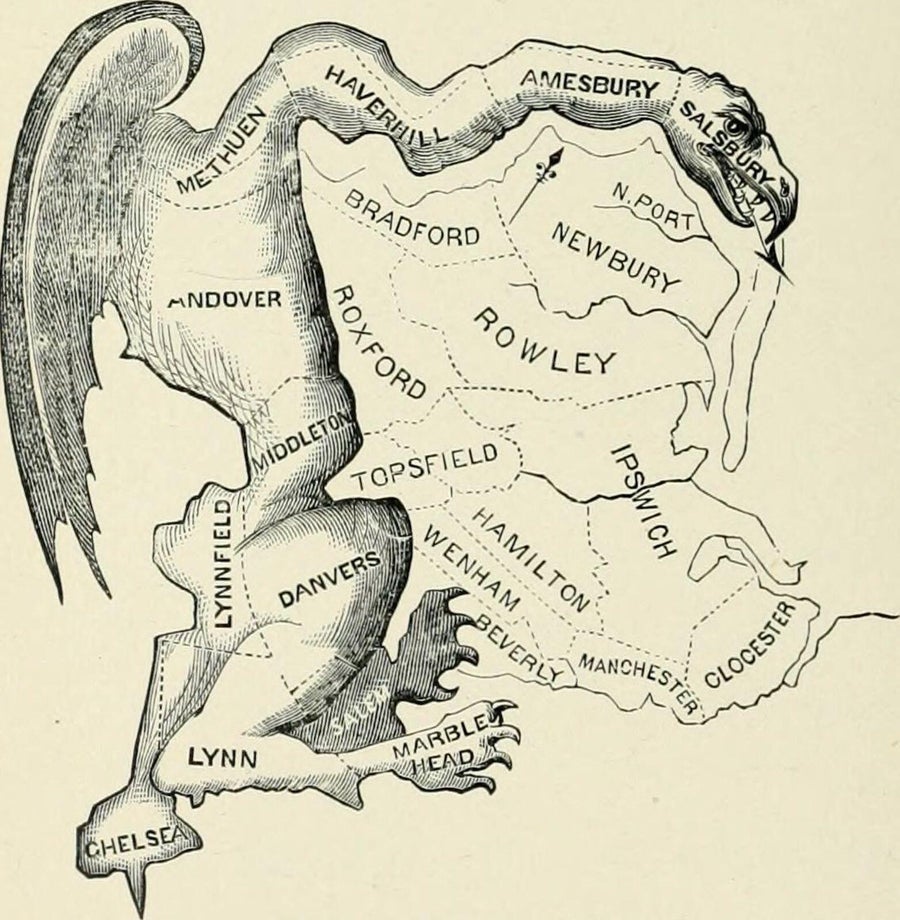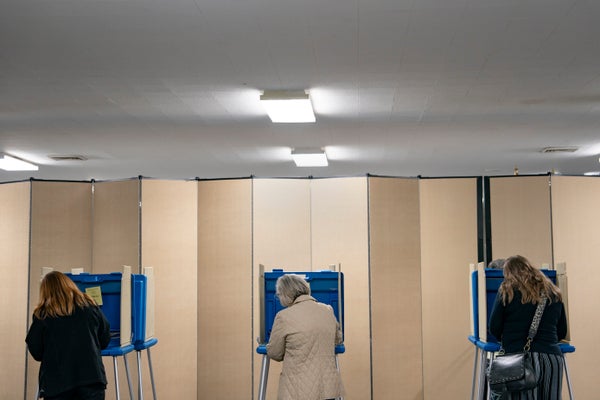On March 5, known as Super Tuesday, 15 U.S. states held primaries or caucuses to select the Republican and Democratic party’s candidates—not just for president but also for Congress—for November’s general election. Those states include North Carolina and Texas, which are gerrymandered to give the Republican Party an advantage in voting. This geographical salami slicing of congressional districts played a part in handing the House of Representatives to Republicans in the 2022 elections, and could do the same this year.
Gerrymandering, by definition, is the practice of deliberately designing voting districts to give a political party, racial group or both an advantage at the polls, an electoral connivance first named in a political cartoon from 1812. State governments redraw electoral districts every 10 years in response to new U.S. Census data. This process is complicated by partisanship in many states and by the nation's history of racist disenfranchisement.
Following a 1986 Supreme Court recommendation, a number of researchers, including political scientists and mathematicians, have developed tools to identify gerrymandering where it exists now and to guide in the creation of new districts. These tools are very sophisticated, involving advanced geometry and often requiring powerful computers to assess the best possible districting.
On supporting science journalism
If you're enjoying this article, consider supporting our award-winning journalism by subscribing. By purchasing a subscription you are helping to ensure the future of impactful stories about the discoveries and ideas shaping our world today.
As I am a theoretical physicist, this kind of math is precisely my jam. However, it irks me to say that math can’t solve the problem, because math didn’t create gerrymandering. Politics did. And politics, however necessary, ain’t governed by science.

Ironically, one fact will probably never change anyone’s minds: Elbridge Gerry, the man for whom the term is named, pronounced his own name like "Gary" rather than "Jerry", so we should be saying “Gary-mandering”.
The Reading Room/Alamy Stock Photo
For starters, to simply be interested in fixing gerrymandering indicates that you believe it is a problem, and that’s a matter of values. After all, politicians designed these districts to give themselves an advantage. They think it’s swell. Meanwhile, judges up to the Supreme Court have too-often declined to enforce the laws on the books meant to stop nefarious redistricting.
Purely mathematical fixes will fail when either justices or mathematicians are biased. Science and justice are only as objective as their practitioners, who are just as prone to racism and other bigotries as anyone else. Existing organizations like the Metric Geometry and Gerrymandering Group are heroically and genuinely dedicated to electoral fairness, but one can easily imagine ideologically opposed think tanks giving a mathematical gloss to heavily biased districting schemes.
To be clear, I don’t think mathematical efforts are useless; we need scientific tools to identify gerrymandering (particularly in subtle or marginal cases) and show what fair districting looks like. The problem, rather, is a familiar one: trying to convince people whose opposition is based on deep-rooted differences in values rather than a lack of facts. Math can’t fix that, particularly if the methods are complicated enough that nonmathematicians can’t easily understand them.
More fundamentally, math also can’t define fairness. The most obvious condition for partisan fairness in districting would likely be one where both the Democrats and Republicans end up with representation relative to their voters. Similarly, naive racial fairness involves dividing districts to give Black, Latinx, white and other groups representation according to their populations.
Much of the Democratic-voting minoritized population is concentrated in urban areas, while the white Republican base resides largely in suburbs and exurbs. As a result, gerrymandering often produces oddly-shaped districts in and around cities (see Ohio’s 7th District and Texas’ 35th District), concentrating Democrats and/or voters of color into the smallest number of Congressional districts, maximizing Republican power elsewhere.
Democrats in the present era are less likely to use partisan gerrymandering (with a few notable exceptions) in congressional races, citing reasonable ethical objections. However, the Democratic Party uses racial gerrymandering extensively on the state and local levels, to break up or dilute blocs of Black or Latinx voters. Since most voters of color are unlikely to jump party, this ensures white party leaders, and their preferred candidates stay in control even where white people are a minority. One result: major cities such as Chicago or New York have elected very few Black or Latinx mayors despite large minoritized populations, and those who are elected tend to be unrepresentative of the voters they serve. Rural voters of color are even more likely to be disenfranchised by simultaneous partisan and racial gerrymandering.
Values help determine whose voices are heard. For example, immigrants, migrants and imprisoned people are counted in the Census, but most of them cannot vote. (Only Maine, Vermont and the District of Columbia allow imprisoned people to vote.) Prison gerrymandering occurs when politicians draw districts to include penitentiaries, so that the population of that district is artificially high, granting their nonincarcerated voters a disproportionately loud voice. Because the U.S. has by far the highest incarceration rate of any major nation in the world, prison gerrymandering plays an outsized role in deciding elections.
Even if you believe every prisoner deserves imprisonment, that all sentences are fair (a position which is not backed upby science), and that punishment should include being stripped of voting rights, that’s a statement of values. It’s a choice based on the calculus of power, not of mathematics.
Advocates for addressing climate change know this well: no amount of evidence will change their opponents’ minds because evidence didn’t bring them to their current position. Math can guide us once we have settled on what values we want for the nation. But it can’t provide objective solutions to a problem where one party and one racial group are invested in the disenfranchisement of others. To put it another way: as with affirmative action and other initiatives to address past harms and alleviate future injustice, we need values that eliminate gerrymandering—racial, partisan, and carceral—and actively punish political actors who reject those values.
This is an opinion and analysis article, and the views expressed by the author or authors are not necessarily those of Scientific American.
